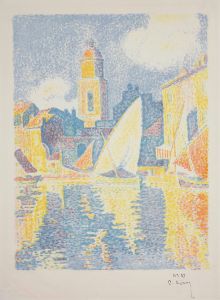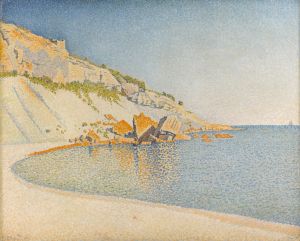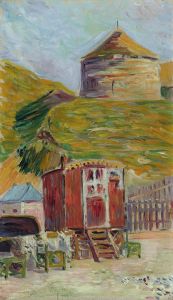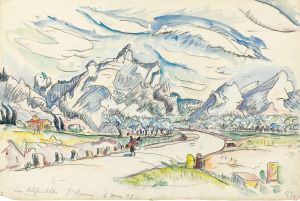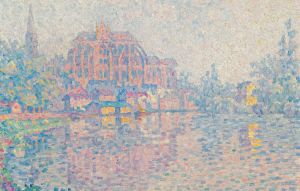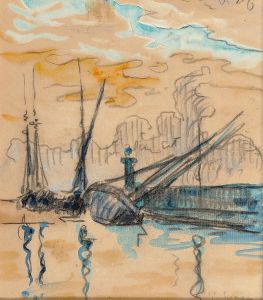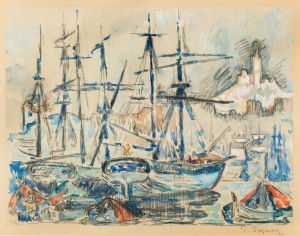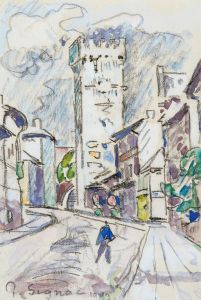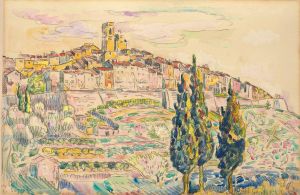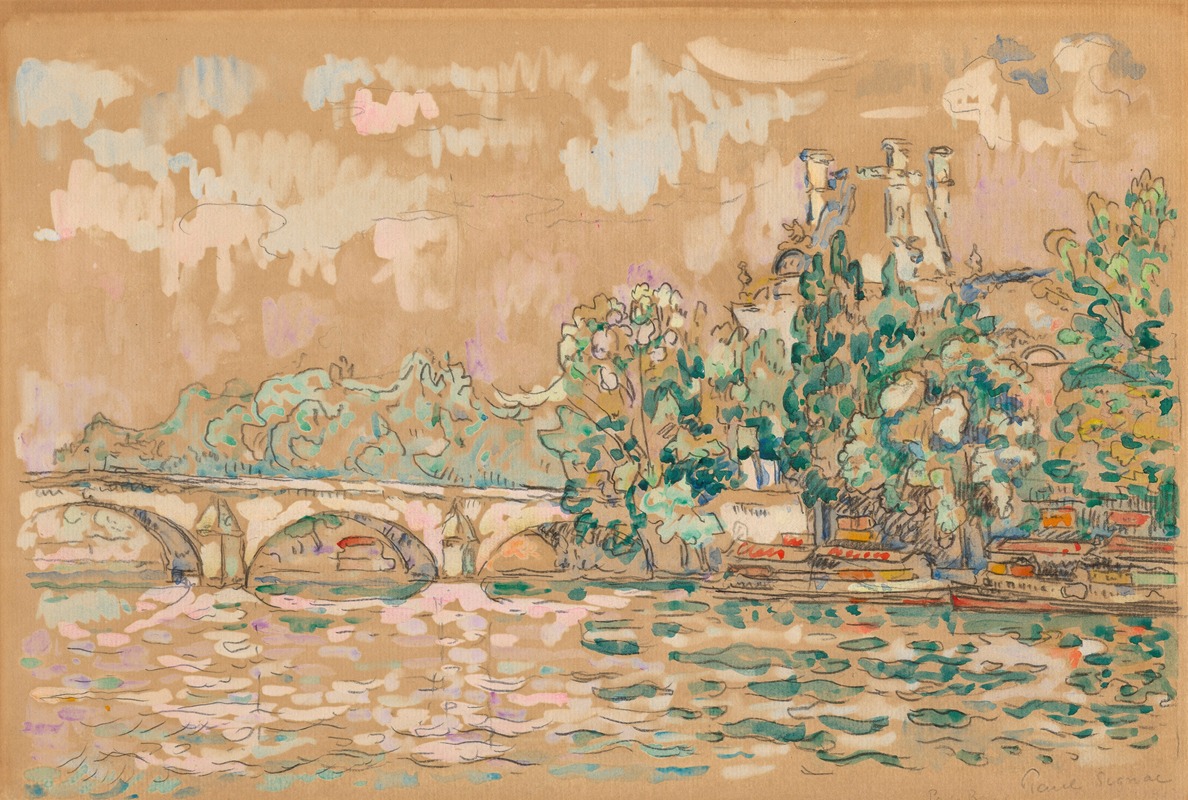
Paris, Le Pont-Royal
A hand-painted replica of Paul Signac’s masterpiece Paris, Le Pont-Royal, meticulously crafted by professional artists to capture the true essence of the original. Each piece is created with museum-quality canvas and rare mineral pigments, carefully painted by experienced artists with delicate brushstrokes and rich, layered colors to perfectly recreate the texture of the original artwork. Unlike machine-printed reproductions, this hand-painted version brings the painting to life, infused with the artist’s emotions and skill in every stroke. Whether for personal collection or home decoration, it instantly elevates the artistic atmosphere of any space.
"Paris, Le Pont-Royal" is a painting by the French Neo-Impressionist artist Paul Signac, created in 1900. Signac was a prominent figure in the development of the Pointillism technique, a method of painting in which small, distinct dots of color are applied in patterns to form an image. This technique was pioneered by Georges Seurat, with whom Signac worked closely. Signac's work is characterized by its vibrant color palette and meticulous attention to the effects of light.
The painting depicts the Pont Royal, one of the oldest bridges in Paris, which spans the River Seine. The bridge connects the left bank of the river, near the Musée d'Orsay, to the right bank, close to the Louvre Museum. This location is significant as it captures a quintessential Parisian scene, blending the architectural beauty of the city with the natural flow of the river.
In "Paris, Le Pont-Royal," Signac employs his signature Pointillist technique to capture the interplay of light and shadow on the water and the bridge. The painting is a testament to Signac's fascination with the effects of light and his ability to convey the atmosphere of a scene through color and form. The use of small, precise brushstrokes creates a shimmering effect, giving the painting a sense of movement and vitality.
Signac's choice of subject matter reflects his interest in urban landscapes and the changing nature of modern life at the turn of the 20th century. The Pont Royal, with its historical significance and central location in Paris, serves as an ideal subject for exploring these themes. The painting captures a moment in time, with the bustling city life suggested by the presence of the bridge and the serene flow of the Seine providing a contrast to the urban environment.
The color palette of "Paris, Le Pont-Royal" is dominated by blues, greens, and purples, which are used to depict the water and sky, while warmer tones highlight the bridge and surrounding architecture. This use of color not only enhances the visual appeal of the painting but also serves to evoke the mood and atmosphere of the scene.
Paul Signac's work, including "Paris, Le Pont-Royal," played a crucial role in the development of modern art. His exploration of color theory and innovative techniques influenced a generation of artists and contributed to the evolution of the Impressionist and Post-Impressionist movements. Signac's paintings are celebrated for their beauty, technical skill, and ability to capture the essence of a moment in time.
Today, "Paris, Le Pont-Royal" is appreciated as a significant example of Signac's work and the broader Neo-Impressionist movement. It remains an important piece for understanding the artistic developments of the late 19th and early 20th centuries and continues to be studied and admired by art enthusiasts and scholars alike.





